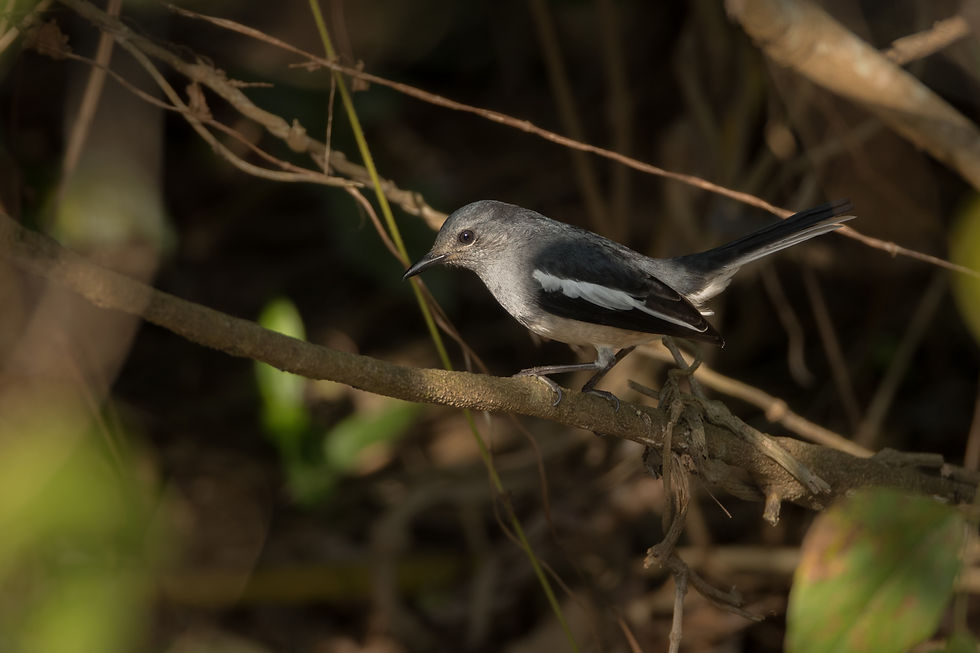The oriental magpie-robin (Copsychus saularis) often accompanies me on my walks, and is a common sight.

Here one catches the light just right, with a sunbeam through a bush, dispersing the light. You can see the female's colouring is much more subdued than the male, which has much more contrast.

This bird was formerly classed as a member of the thrush family Turdidae, but is now considered an Old World flycatcher. They are distinctive black and white birds with a long tail that is held upright as they forage on the ground or perch conspicuously.








Comments